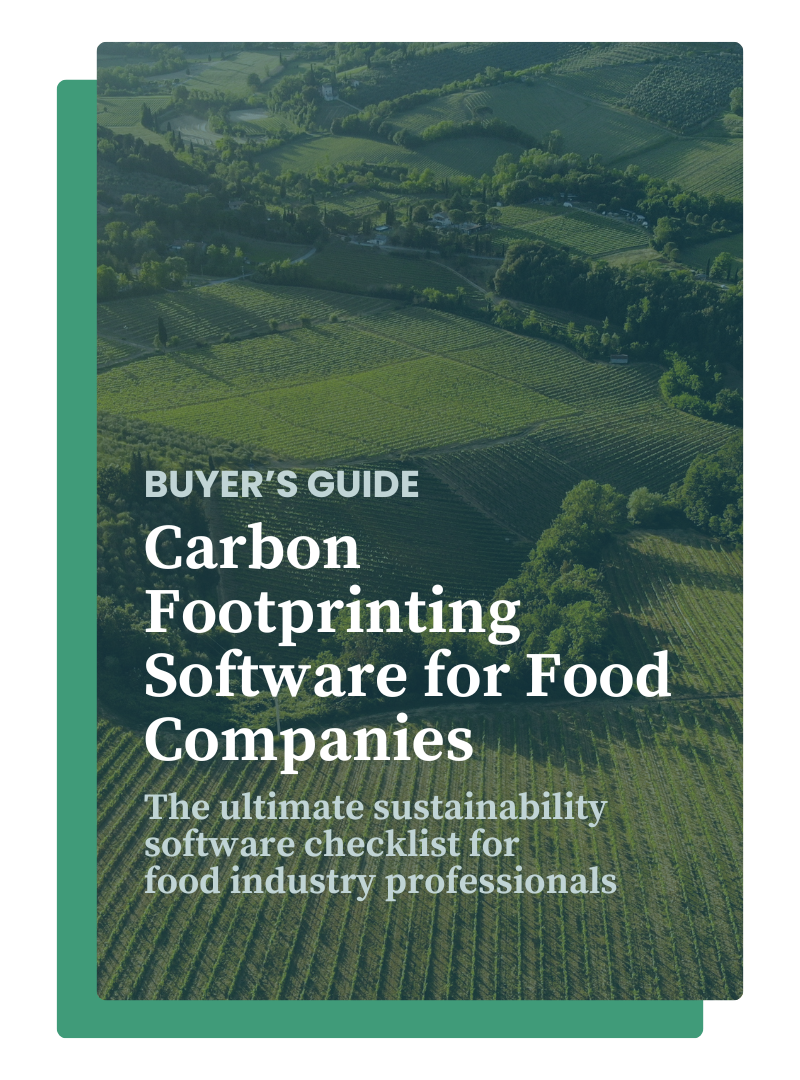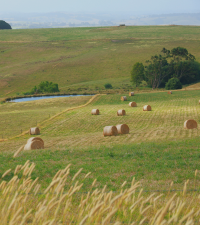Scaling Regenerative Agriculture: Insights for the Food Industry
June 27, 2025

Regenerative agriculture is no longer just a visionary ideal in the food industry, it’s now becoming a strategic business priority. But scaling regenerative practices requires more than ambition. It demands shared metrics, meaningful collaboration, and a willingness to embrace complexity.
In a recent webinar hosted by HowGood, in partnership with the World Business Council for Sustainable Development (WBCSD), sustainability leaders from companies including IKEA, ADM, and Bayer explored what it truly takes to operationalize regenerative agriculture. What emerged wasn’t a checklist of best practices, but a strong narrative about translating intention into lasting impact.
From Definitions to Outcomes: Moving Beyond a Single Regenerative Formula
“Regenerative agriculture is about regenerating living systems,” said Ethan Soloviev, Chief Innovation Officer at HowGood. “Living systems don’t do just a single thing. A single tree drops thousands of seeds. We need thousands of approaches to match the diversity of our ecosystems, farms, and businesses.”
That framing, embracing multiple approaches while aligning around shared outcomes, carried through the conversation. Rather than chasing a universal definition, the discussion centered on dynamic, measurable impact as the true driver of progress.
Creating Convergence: The Role of Shared Metrics
This focus on outcomes is gaining traction across the industry. As Stefania Avanzini, Director, One Planet Business for Biodiversity at WBCSD explained, there’s a clear shift underway: from prescriptive, practice-based models to results-based agricultural systems, and that shift is creating real momentum.
Over the course of two years, WBCSD and One Planet Business for Biodiversity (OP2B) brought together organizations representing 1,100 companies to align on 11 environmental and social outcomes and 10 core metrics. “We didn’t reinvent the wheel,” Stefania noted. “We brought everyone together to converge on what already had the most consensus.”
The result is a framework that supports alignment across supply chains, streamlines reporting, and lays the groundwork for investment. These metrics are more than measurement tools - they support valuation, financing, policy design, and cost-sharing strategies across the value chain.
Why It Matters on the Ground: Farmer-Centric Implementation
From ADM’s perspective, the real challenge isn’t the science, it’s rethinking how to engage farmers.
“The most complicated part isn’t methodologies or outcomes,” said Paul Scheetz, Director of Climate Smart Ag Origination at ADM. “It’s engaging farmers differently than we have over the last 120 years.”
To succeed, programs need to prioritize frictionless data collection, technical support, and meaningful incentives. But most critically, they must make results tangible for the farmer.
“Early adopters don’t need metrics to know they’re on the right track,” Paul noted. “They see less erosion, better water filtration, more earthworms. But the middle movers? They need data. They need proof.”
He also underscored the long-term perspective many producers bring: they’re investing not just in next season’s yield, but in land that will support future generations. “They’re thinking about their kids’ kids. And what they care most about is soil.”
Scaling Systems: The Value of Comparability
For Bayer, regenerative efforts start the same way - by understanding what works for farmers first. In one rice project in Asia, the team began by identifying what would make the program both profitable and sustainable for producers. Only after that foundation was built did they bring in metrics to track progress.
“Metrics are how we measure the performance of the system,” said Daniel Glas, Sustainability Venture Lead at Bayer. “But the system has to work for the farmer first.”
That said, standardized metrics still play a crucial role - enabling comparability, guiding R&D, and supporting credible consumer messaging. They also help identify hotspots for environmental improvement. But change doesn’t happen overnight.
“It’s two to four years to see meaningful change on outcomes such as soil health,” Daniel explained. “And it’s hyperlocal. The answer in Illinois is different from the answer in Iowa.”
Beyond Sustainability: Regen Ag as Business Resilience
At IKEA, regenerative agriculture is seen not just as a climate solution, but as a business strategy. “We serve on average around 700 million meals a year. We work in food, textiles, and bio-based materials. Agriculture is central to our future,” said Rafael Elizondo, Global Head of Agriculture at IKEA.
The company’s regenerative pilot projects span diverse commodities: cotton in Brazil, beef in the U.S., and even coffee. But the goal now is to move beyond the pilot phase and make regenerative agriculture standard business practice.
“To scale, this has to become the new normal,” Rafael said. “And that means knowing how much we’re investing, what the short-term cost is, and what the long-term return will be.”
“One challenge? Bridging the gap between our short-term business planning cycles and the long-term nature of agricultural transformation. The metrics are the bridge.”
To build internal support, IKEA invested in immersive education for leadership - full-day sessions where executives engaged directly with farmers and outside experts. “Now the way we talk about agriculture at the top is changing.”
A New Phase of Collaboration in the Food Industry
The closing message is clear: aligning on metrics is only the beginning. The next chapter is about implementation, adoption, and cross-sector collaboration.
“Don’t wait for someone else to do it. It’s you,” Ethan challenged the audience. “You’re the ones who are going to make regenerative agriculture real in your supply systems.”
With global alignment gaining traction and business buy-in accelerating, the opportunity is here. The question now is how quickly we can translate a shared vision into measurable action.
Receive the full list of resources discussed in the webinar by using this form and requesting “resources from the Operationalizing Regenerative Agriculture webinar discussion.”



.png)
